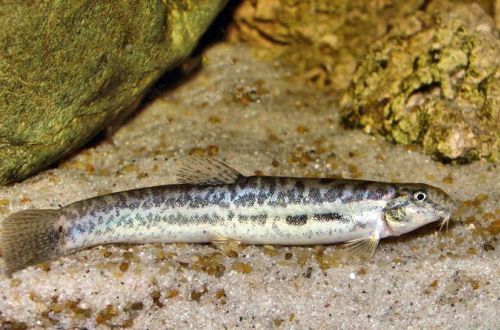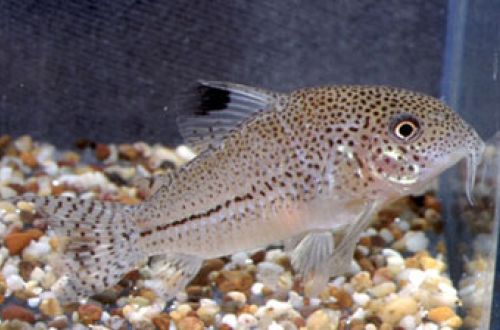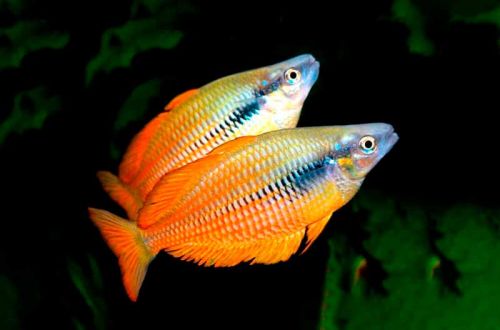
Cockerel ntawm Stigmos
Betta Stigmosa or Cockerel Stigmosa, scientific name Betta stigmosa, belongs to the Osphronemidae family. Easy to keep and breed fish, compatible with many other species. Considered a good choice for beginner aquarists with little experience. The disadvantages include nondescript coloring.
txheem
Chaw Nyob
It comes from Southeast Asia from the Malay Peninsula from the territory of the Asia Minor state of Terengganu. The type specimens were collected in the region known as the Sekayu Recreational Forest near the city of Kuala Berang. This area has been a tourist attraction since 1985 with numerous waterfalls among the hills covered with rainforest. The fish inhabit small streams and rivers with clean clear water, the substrates consist of rocks and gravel with a layer of fallen leaves, tree branches.
Cov ntaub ntawv luv luv:
- Qhov ntim ntawm thoob dej yug ntses - los ntawm 50 litres.
- Kub - 22-28 ° C
- Tus nqi pH - 5.0-7.0
- Dej hardness - 1-5 dGH
- Substrate hom - txhua qhov tsaus ntuj
- Teeb pom kev - subdued
- Cov dej tsis huv - tsis muaj
- Dej txav - me me los yog tsis muaj
- Qhov loj ntawm cov ntses yog 4-5 cm.
- Khoom noj - txhua yam khoom noj
- Temperament - kev thaj yeeb
- Cov ntsiab lus - ib leeg, ua khub lossis hauv ib pab pawg
Hauj lwm
Adult individuals reach a length of 4–5 cm. They have a massive body with relatively small fins. The main color is grey. Males, unlike females, are larger, and there is a turquoise pigment on the body, which is most intense on the fins and tail.
Khoom noj khoom haus
Commercially available fish usually accept dry, frozen and live foods that are popular in the aquarium hobby. For example, a daily diet may consist of flakes, pellets, combined with brine shrimp, daphnia, bloodworms, mosquito larvae, fruit flies, and other small insects.
Kev tu thiab tu, kev npaj ntawm lub thoob dej yug ntses
The optimal size of the aquarium for one pair or a small group of fish starts from 50 liters. The ideal conditions of detention are those that are as close as possible to the natural habitat of this species. Of course, achieving such an identity between a natural biotope and an aquarium is not an easy task, and in most cases it is not necessary. Over the generations of life in the artificial environment, Betta Stigmosa has successfully adapted to other conditions. The design is arbitrary, it is only important to provide a few shaded areas of snags and thickets of plants, but otherwise it is selected at the discretion of the aquarist. It is much more important to ensure high water quality within the acceptable range of hydrochemical values and to prevent the accumulation of organic waste (feed residues, excrement). This is achieved through regular maintenance of the aquarium and the smooth operation of the installed equipment, primarily the filtration system.
Cwj Pwm thiab Compatibility
They are distinguished by a peaceful calm disposition, although they belong to the group of Fighting Fish, but in this case this is nothing more than a classification. Of course, among males there is nodule for the position of the intraspecific hierarchy, but it does not come to clashes and injuries. Compatible with other non-aggressive species of comparable size that can live in similar conditions.
Kev yug me nyuam
Stigmos bettas are caring parents, which is not often seen in the world of fish. In the course of evolution, they developed an unusual way of protecting masonry. Instead of spawning on the ground or among plants, the males take the fertilized eggs into their mouths and hold them until the fry appear.
Breeding is quite simple. The fish should be in a suitable environment and receive a balanced diet. In the presence of a sexually mature male and female, the appearance of offspring is very likely. Spawning is accompanied by lengthy mutual courtship, culminating in the “dance-embrace”.
Ntses kab mob
Qhov ua rau ntawm cov kab mob feem ntau yog qhov tsis zoo ntawm kev kaw. Qhov chaw nyob ruaj khov yuav yog tus yuam sij rau kev khaws cia zoo. Nyob rau hauv cov kev tshwm sim ntawm cov tsos mob ntawm tus kab mob, ua ntej ntawm tag nrho cov, qhov zoo ntawm cov dej yuav tsum tau soj ntsuam thiab, yog hais tias deviations pom, yuav tsum tau ntsuas los kho qhov teeb meem. Yog tias cov tsos mob tshwm sim los yog hnyav dua, yuav tsum tau kho mob. Nyeem ntxiv txog cov tsos mob thiab kev kho mob hauv Aquarium Fish Diseases section.





